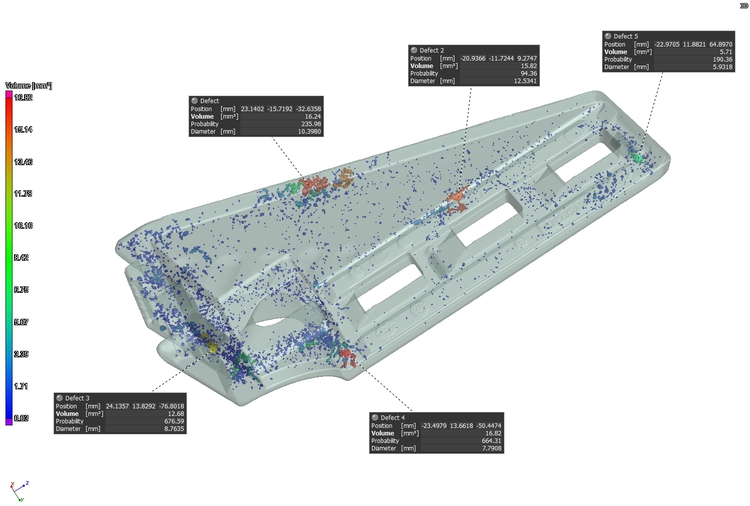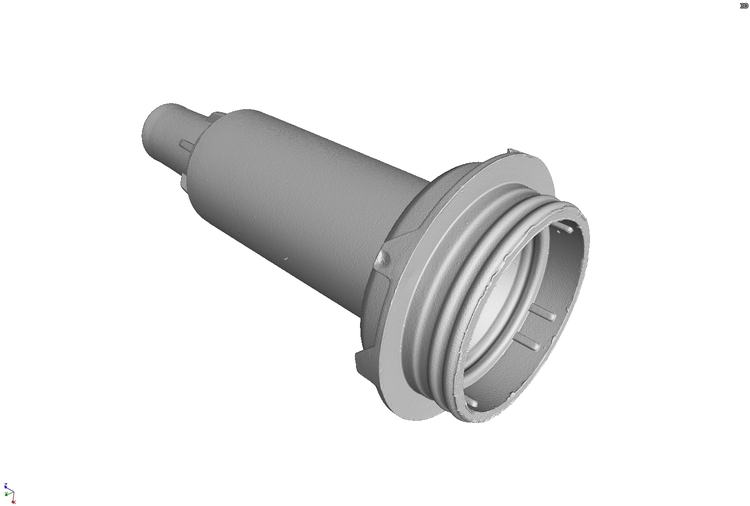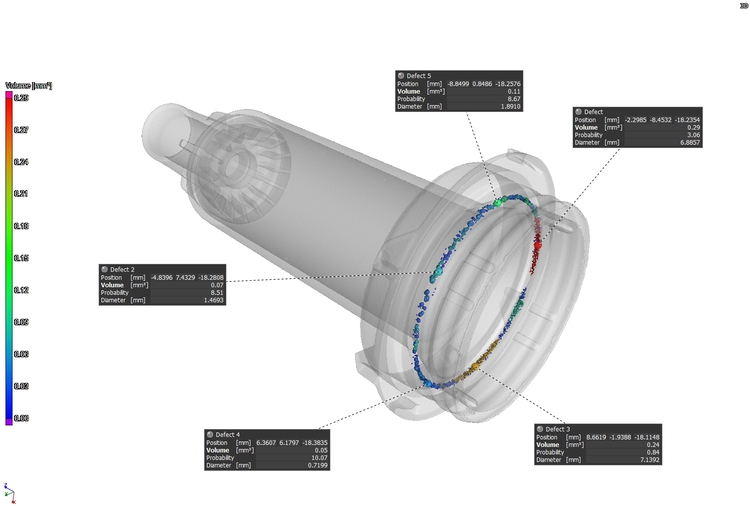Porosity / Inclusion Analysis
What is porosity/inclusion analysis?
A porosity is usually an air gap or bubble within a part. Porosities are often unwanted and found commonly in injection moulded or cast parts. A porosity can often be seen as a dark area on a CT slice. The opposite to a porosity is an inclusion. These are usually seen as bright areas on a CT slice which indicate a denser material within an otherwise homogeneous part. Inclusions can be desirable and composite parts rely on inclusions to perform as expected.
Visualising Pores and Inclusions
Pores and inclusions can be viewed in both 2D and 3D. The 3D representation as seen below gives a very clear understanding of the location of the pores in the part.

Analytical Information
Numerical data can be generated from a porosity analysis. This allows direct comparisons between parts on the type of porosity that has been detected. A sample of the types of information that can be extracted from porosities has been listed below.
- Diameter
- XYZ location
- Volume
- Surface area
- Sphericity
- Distance below surface
Further Analysis
It can be useful to see pores in your parts but understanding how these are going to affect part performance is important. If the scan is of a cast part and the part has yet to be machined, it is possible to overlay the machined CAD model and calculate if a pore is located in excess material or if it will remain after machining.
Further to this we can conduct finite element analysis of the part and include the porosities in the calculation. Rather than get results from a theoretically perfect model, with CT it is possible to test the real world part which includes all of the real world imperfections.























